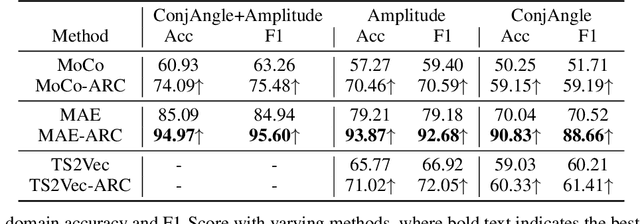Exploit the antenna response consistency to define the alignment criteria for CSI data
Paper and Code
Oct 10, 2023



Self-supervised learning (SSL) for WiFi-based human activity recognition (HAR) holds great promise due to its ability to address the challenge of insufficient labeled data. However, directly transplanting SSL algorithms, especially contrastive learning, originally designed for other domains to CSI data, often fails to achieve the expected performance. We attribute this issue to the inappropriate alignment criteria, which disrupt the semantic distance consistency between the feature space and the input space. To address this challenge, we introduce \textbf{A}netenna \textbf{R}esponse \textbf{C}onsistency (ARC) as a solution to define proper alignment criteria. ARC is designed to retain semantic information from the input space while introducing robustness to real-world noise. We analyze ARC from the perspective of CSI data structure, demonstrating that its optimal solution leads to a direct mapping from input CSI data to action vectors in the feature map. Furthermore, we provide extensive experimental evidence to validate the effectiveness of ARC in improving the performance of self-supervised learning for WiFi-based HAR.
 Add to Chrome
Add to Chrome Add to Firefox
Add to Firefox Add to Edge
Add to Edge